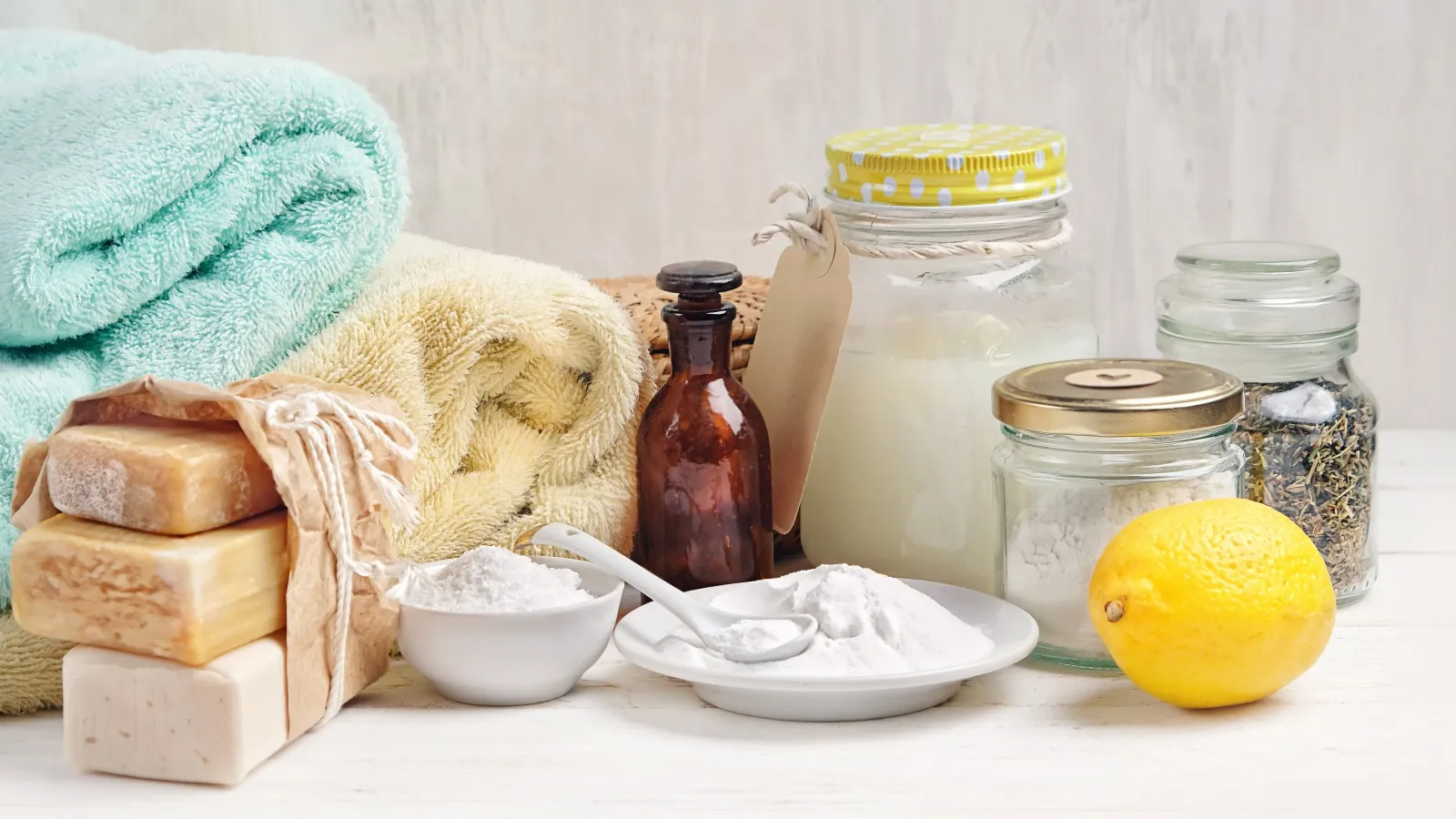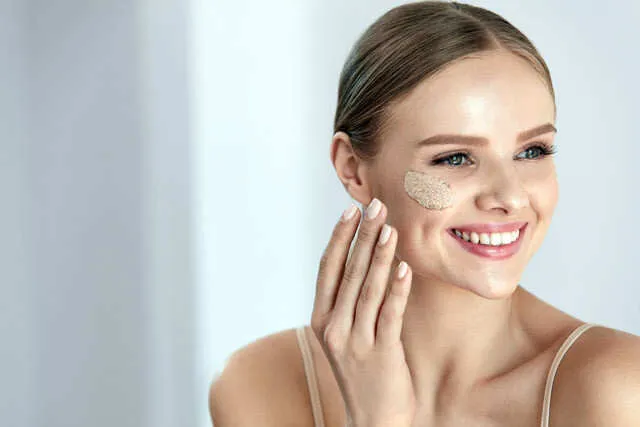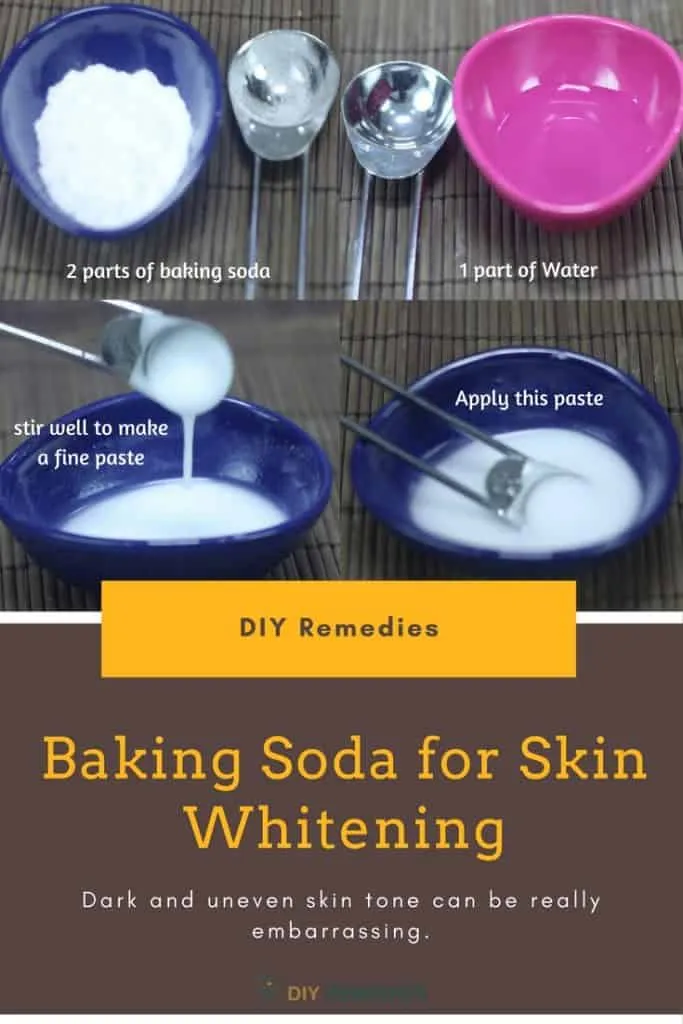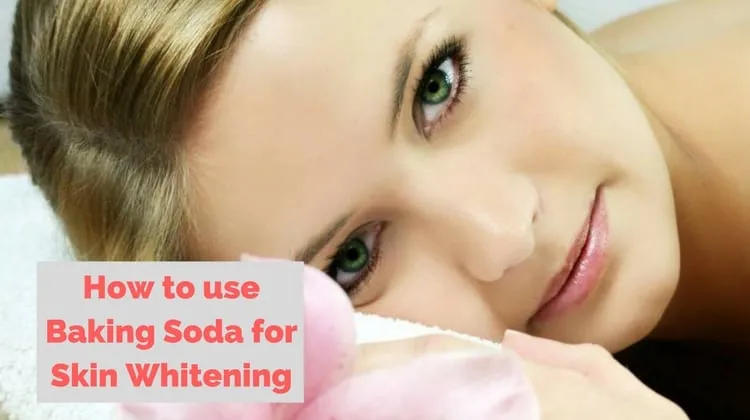Are you seeking a natural and affordable way to brighten your skin tone? Baking soda, a common household staple, has gained popularity as a potential skin whitening agent. This guide explores the use of baking soda for skin whitening, providing a comprehensive understanding of its benefits, usage, and associated risks. Whether you’re looking to diminish dark spots, even out your skin tone, or achieve a radiant complexion, this guide will provide you with the necessary information to make informed decisions about incorporating baking soda into your skincare routine. Discover how this versatile ingredient can help you on your journey to achieving a brighter, more luminous skin.
Understanding Baking Soda and Skin Whitening
Baking soda, or sodium bicarbonate, is a white crystalline powder that acts as a mild abrasive and pH neutralizer. In the context of skin whitening, it is believed to help by exfoliating the skin, removing dead skin cells that can contribute to a dull complexion. The exfoliation process can potentially reveal brighter, newer skin underneath. However, it’s crucial to understand that skin whitening is a complex process and requires careful consideration. The effectiveness of baking soda varies depending on the skin type, the concentration used, and the frequency of application. Always start with a small amount and monitor your skin’s reaction.
The Science Behind Baking Soda for Skin
The scientific basis for baking soda’s effect on the skin lies primarily in its properties as an exfoliant and its ability to affect the skin’s pH. As a mild abrasive, baking soda can physically remove the top layer of dead skin cells, which often contain melanin, the pigment responsible for skin color. This process can make the skin appear lighter and brighter. Baking soda also has a slightly alkaline pH. Applying it to the skin can temporarily disrupt the skin’s natural acid mantle, which may promote faster cell turnover. This increased turnover can, in theory, lead to a brighter complexion. However, the skin’s natural pH balance is essential for its health, and overusing alkaline substances like baking soda can lead to irritation or dryness. The image of a baking soda face mask can give an idea how it applies.
How Baking Soda Affects Skin

When applied to the skin, baking soda primarily acts as an exfoliant, helping to remove dead skin cells and impurities. This exfoliating action can contribute to a smoother skin texture and a brighter appearance. In addition, baking soda can temporarily alter the skin’s pH levels. This can potentially affect melanin production and, with consistent use, might lighten dark spots or uneven pigmentation. However, it is essential to approach this process with caution, as disrupting the skin’s natural pH balance can lead to sensitivity or irritation. The image shows a healthy smooth skin that results from using baking soda on face.
Baking Soda as a Skin Whitening Agent
Baking soda’s role as a skin whitening agent is primarily due to its exfoliating properties. By removing the top layer of dead skin cells, it can diminish the appearance of dark spots, acne scars, and uneven skin tone. However, it does not contain any compounds that directly reduce melanin production, which is the primary cause of skin pigmentation. Its effectiveness as a skin whitener is therefore limited and primarily focuses on creating the illusion of lighter skin by removing the outer layer of darker skin cells. Over time, with consistent use, this can result in a subtly brighter complexion. See the image to illustrate this effect.
Benefits of Using Baking Soda on Skin
Beyond its potential skin whitening effects, baking soda offers several other benefits for the skin. It can act as a gentle exfoliator, helping to unclog pores and remove impurities that can lead to acne. Baking soda also has mild anti-inflammatory properties, which can help soothe irritated skin. Moreover, its alkaline nature can help neutralize acids on the skin, making it useful for addressing issues like mild sunburns or insect bites. Its affordability and accessibility make it a convenient ingredient for DIY skincare treatments. It can be added with water or other ingredients for the desired results.
Exfoliation and Skin Brightening

Exfoliation is a critical process in skin brightening, as it removes the surface layer of dead skin cells, revealing the newer, brighter skin underneath. Baking soda’s mild abrasive texture makes it an effective exfoliant. By gently scrubbing the skin with a baking soda mixture, you can physically remove dead cells, dirt, and other impurities that contribute to a dull complexion. Regular exfoliation with baking soda can help improve skin texture, reduce the appearance of dark spots, and promote a more radiant glow. However, it is essential to avoid over-exfoliating, as this can lead to skin irritation and dryness. The image of exfoliation process can help you.
How to Use Baking Soda for Skin Whitening Safely
To use baking soda for skin whitening safely, start by performing a patch test. Mix a small amount of baking soda with water and apply it to a small area of skin, such as your inner arm. Wait 24 hours to check for any adverse reactions, such as redness, itching, or irritation. If no reaction occurs, you can proceed. Always use a diluted solution, mixing baking soda with water or other ingredients like honey or lemon juice. Avoid scrubbing too vigorously, as this can damage the skin. Limit the frequency of use to once or twice a week, and always moisturize your skin after treatment to prevent dryness. See the image for safe application.
Creating Baking Soda Face Masks
Creating baking soda face masks can enhance the skin whitening effects while minimizing potential risks. These masks typically involve mixing baking soda with other beneficial ingredients to create a paste. It is important to ensure the correct ratio of baking soda is used to create a balanced formula suitable for skin. Before applying any mask to your entire face, test it on a small area to check for adverse reactions. Homemade face masks are generally gentler than commercial products as they have lesser chemicals. There are several combinations that are commonly used and known to be beneficial. Refer to the recipe section for detailed steps.
Step-by-Step Guide

To prepare a baking soda face mask, start by gathering your ingredients and mixing them in a clean bowl. Begin with a small amount of baking soda, typically about one to two teaspoons, and gradually add water or another liquid, such as honey or lemon juice, to form a paste. The consistency should be smooth and easy to apply. Apply the mask evenly to your clean, dry face, avoiding the sensitive eye area. Leave it on for the recommended time, usually no more than 10-15 minutes, and then rinse thoroughly with lukewarm water. Pat your face dry and apply a moisturizer.
Ingredients
The basic ingredients for a baking soda face mask include baking soda and a liquid, such as water, honey, or lemon juice. Water provides a simple base, while honey adds moisturizing and antibacterial properties. Lemon juice is often used for its potential skin-brightening effects, but it can also increase sun sensitivity, so use it cautiously. Other ingredients like yogurt or aloe vera can be added to soothe and hydrate the skin. The key is to select ingredients that complement your skin type and address your specific skincare concerns.
Application
When applying a baking soda face mask, ensure your face is clean and dry. Use your fingertips or a clean mask brush to apply the paste evenly across your face, avoiding the delicate skin around your eyes and mouth. Leave the mask on for the recommended time, typically 10-15 minutes, or as directed in your chosen recipe. During this time, you might experience a slight tingling sensation, which is normal, but if you feel any burning or excessive discomfort, rinse the mask off immediately. After the application, rinse with lukewarm water, pat your face dry, and apply a moisturizer to hydrate your skin.
Important Precautions

Before using a baking soda face mask, always perform a patch test to check for potential allergic reactions or sensitivities. Avoid applying the mask to broken or irritated skin. Do not use baking soda excessively, as it can disrupt the skin’s natural pH balance, leading to dryness and irritation. Always follow the recommended usage instructions and limit the frequency of use to once or twice a week. If you experience any adverse reactions, such as redness, itching, or burning, discontinue use immediately. Always wear sunscreen when going outdoors because of increasing sun sensitivity.
Baking Soda Skin Whitening Recipes
There are several recipes for baking soda face masks, each with different benefits. Experiment with different ingredients to find what works best for your skin type. Below are a few popular combinations. Always perform a patch test before applying any new recipe to your entire face. These recipes are suggestions, and you can modify them based on your preferences and skin needs. However, it’s essential to proceed with caution and pay close attention to how your skin reacts.
Baking Soda and Honey Mask
Combine 1 teaspoon of baking soda with 2 teaspoons of honey. Honey is a natural humectant that helps to hydrate and soothe the skin. Mix the ingredients until they form a smooth paste. Apply the mask to your clean face and leave it on for about 10 minutes. Rinse thoroughly with lukewarm water and moisturize. This mask provides both exfoliation and hydration, making it suitable for most skin types. It’s gentle and can leave your skin feeling soft and refreshed. The image can show the mixing process.
Baking Soda and Lemon Mask

Mix 1 teaspoon of baking soda with 1 teaspoon of fresh lemon juice. Lemon juice contains citric acid, which can help brighten the skin. Apply the mixture to your clean face, avoiding the eye area, and leave it on for no more than 5-7 minutes. Rinse thoroughly with lukewarm water and apply a moisturizer. This mask is more potent and should be used cautiously, as lemon juice can increase sun sensitivity. It is recommended to use this mask at night and wear sunscreen the following day. The image can guide you with the proportion of the mixture.
Baking Soda and Water Paste
Mix 1 teaspoon of baking soda with just enough water to form a paste. This is the simplest version and is excellent for those with sensitive skin. Apply the paste to your clean face and gently massage it in circular motions for a minute or two. Leave it on for about 5 minutes. Rinse thoroughly with lukewarm water and moisturize. This mask offers gentle exfoliation. The image shows the application of the paste on the skin.
Potential Risks and Side Effects
While baking soda can offer certain benefits for the skin, it also carries potential risks and side effects. Overuse can disrupt the skin’s natural pH balance, leading to dryness, irritation, and even eczema. Some individuals may experience redness, itching, or a burning sensation after using baking soda. It’s essential to monitor your skin’s reaction and discontinue use if any adverse effects occur. Always perform a patch test before applying any baking soda mixture to your entire face. It’s better to be safe than sorry.
Skin Irritation and Sensitivity

One of the most common side effects of using baking soda on the skin is irritation. This can manifest as redness, itching, or a burning sensation. The abrasive nature of baking soda, combined with its alkaline pH, can strip the skin of its natural oils, leading to dryness and sensitivity. People with sensitive skin or conditions like eczema are particularly susceptible to irritation. If you experience any signs of irritation, discontinue use immediately. The image depicts skin that has been affected due to the irritation.
Alternatives to Baking Soda for Skin Whitening
If you are concerned about the potential risks of using baking soda, several alternatives can help brighten your skin tone. Ingredients like alpha-hydroxy acids (AHAs), such as glycolic and lactic acid, can exfoliate the skin and improve its texture. Vitamin C serums can help brighten the skin and reduce the appearance of dark spots. Niacinamide, a form of vitamin B3, can reduce inflammation and improve skin tone. Always do proper research on these alternatives. The image can show some examples of other ingredients.
The Best Practices for Skin Whitening
Achieving a brighter complexion involves adopting best practices in skincare, focusing on both exfoliation and protection. Regular exfoliation, whether with baking soda or other methods, is crucial for removing dead skin cells and promoting cell turnover. However, it’s equally important to protect your skin from sun damage, which can worsen pigmentation and dark spots. Use sunscreen daily, even on cloudy days, and wear protective clothing when outdoors. Staying hydrated, eating a balanced diet, and getting enough sleep also contribute to healthy, radiant skin.
Other Ingredients that Can Help Whitening

Besides baking soda, other ingredients can contribute to skin whitening. Vitamin C is a powerful antioxidant that brightens the skin and protects against sun damage. Retinoids, derived from vitamin A, can stimulate collagen production and reduce the appearance of dark spots. Niacinamide, or vitamin B3, can improve skin tone and reduce inflammation. AHAs, such as glycolic acid, gently exfoliate the skin and promote cell turnover. Hyaluronic acid helps hydrate the skin. When adding these ingredients, incorporate them gradually to check how your skin reacts.
Achieving and Maintaining Glowing Skin
Achieving and maintaining glowing skin involves a holistic approach to skincare. Start with a consistent skincare routine that includes cleansing, exfoliating, and moisturizing. Choose products that are suitable for your skin type and address your specific concerns. Protect your skin from sun damage by using sunscreen daily. Adopt a healthy lifestyle, including a balanced diet, regular exercise, and adequate sleep. Reduce stress and avoid smoking, as these factors can affect your skin’s health. Regular visits to a dermatologist can help you monitor your skin’s health.
In conclusion, while baking soda may offer some benefits for skin whitening due to its exfoliating properties, it is essential to use it cautiously and be aware of the potential risks. Always perform a patch test, use diluted solutions, and limit the frequency of use. Consider alternative ingredients and practices for skin whitening, and adopt a comprehensive skincare routine to achieve and maintain a healthy, radiant complexion. Remember to prioritize your skin’s health and consult with a dermatologist if you have any concerns or questions.
